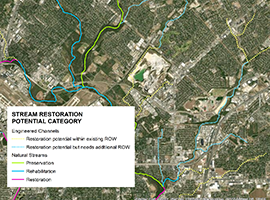Turnbull Living Shoreline
Arundel Rivers Federation (ARF) identified shoreline erosion as a major source of sediment to Glebe Bay, which is home to an existing oyster sanctuary. A living shoreline project was proposed to help prevent further erosion, create tidal marsh habitat, and improve oyster habitat. EPR performed an alternatives design analysis using a decision tree created by the Virginia Institute for Marine Science to select an appropriate living shoreline restoration approach. The decision tree guides stakeholders through an evaluation process on how assessed parameters such as fetch, nearshore depth, and shoreline condition can be adequately managed to reduce erosion rates through living shoreline techniques. Upon determining the appropriate technique, EPR prepared the design and implemented a living shoreline project for Turnbull Estates along 700 feet of eroding shoreline.
The proposed restoration approach included stone sills, “Mini-Bay” Reef Balls, and low and high tidal marsh habitats. The use of Reef Balls was an innovative recommendation to provide wave attenuation while also enhancing the establishment of oyster beds. Reef Balls have been utilized in various places throughout the nation but not in the Maryland area. Project stakeholders and regulatory agencies agreed to have the project serve as a demonstration project on the use of Reef Balls. Therefore, the design proposed the placement of Reef Balls in a variety of orientations and water depths to evaluate the relationship between effective wave attenuation and oyster production.








